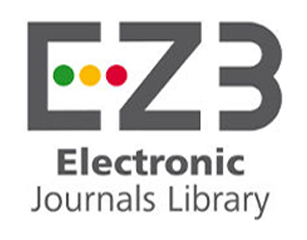THE STATE OF TERRITORIAL COMMUNITIES AND ANALYSIS OF THEIR INVESTMENT ATTRACTIVENESS
DOI:
https://doi.org/10.32689/2617-2224-2019-4(19)-132-143Keywords:
financial solvency, investment attractiveness, territorial community, economic development of regions, local governmentsAbstract
Today, the acute problem is the state of local budgets, indicating the limited financial resources. As a result, local authorities cannot perform properly the functions and tasks assigned to them. Now Ukraine is in need of effective, dynamic and highly professional institutions of state power.
Quantitative indicators are important in assessing the effectiveness of local communities, but they must be taken into account in a strong correlation. It is extremely important to measure the population of the community, which depends on how much money from the budget the local community for their needs will receive.
As a matter of fact, the use of the statistical indicator of the population in the territorial context indicates that it is taken into account during the formation of many important budget-forming indicators. This indicator is used both in the calculation of indicators of provision of the population of the territorial community with social infrastructure, and in the calculation of other expenses in the system of inter-budgetary relations. The number of permanent residents of the territorial community is used for the calculation.
The main elements of ability territory communities is their size and population. The larger the area is, the more it allows to implement infrastructure, investment and innovation projects. This indicator affects the prospects of the territorial community of Ukrainian and foreign investment and innovation resources, as well as increases the competitiveness of the region.
Key indicators of territorial communities allow to distribute local communities according to their level of ability and investment attractiveness.
Of course, to create an effective policy for the development of territorial communities, it is not enough to use only quantitative indicators of the population. It is important to rely on qualitative indicators, such as the satisfaction of the local population, the level of communication of public authorities with the public and the like.
References
Біла С. О. Вплив децентралізації на стимулювання економічного зростання територіальних громад в Україні / С. О. Біла // Наук. ча- сопис НПУ ім. М. П. Драгоманова. Серія № 18. Економіка і право : зб. наук. пр. Вип. 27. К. : Вид-во НПУ ім. М. П. Драгоманова, 2014. С. 61– 69.
Експертний аналіз бюджетів ОТГ по кожній області [Електронний ресурс]. — Режим доступу: https://decentralization.gov.ua/news/10218
Сторонянська І. З. Напрямки модер- нізації фінансового забезпечення розвитку сільських територіальних громад у контексті завдань адміні- стративно-територіальної рефор- ми / І. З. Сторонянська, А. О. Пе- лехатий // Фінанси України. 2014. № 10. С. 97–108.
Сухарська Л. В. Елементи системи фінансового забезпечення розвитку територіальної громади / Л. В. Сухарська // Вісн. НАДУ. 2016. № 1. С. 119–125.
Сторонянська І. З. Бюджети роз- витку місцевих бюджетів: пробле- ми формування та використання в контексті поглиблення фінансової децентралізації / І. З. Сторонянська, Л. Я. Беновська // Фінанси України. 2016. № 5. С. 34–47.
Мамонов К. А. Економіко-матема- тичне моделювання (модульний варіант) : навч. посіб. для студ. галузі знань 0305 “Економіка та під- приємництво” напряму підготовки 6.030509 “Облік і аудит” / К. А. Мамонов, Б. Г. Скоков, С. Я. Політучий. Х. : ХНАМГ, 2010. 226 с.
Бюджетний кодекс України [Елек- тронний ресурс]. — Режим досту- пу : http://zakon2.rada.gov.ua/laws/ show/2456-17/page7
Павлюк А. П. Економічні аспекти формування спроможних територі- альних громад в Україні / А. П. Пав- люк // Стратег. пріоритети. 2016. № 1 (38). С. 137–146.











